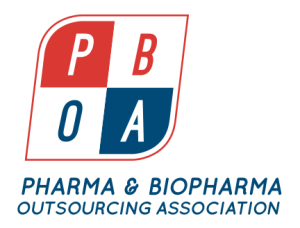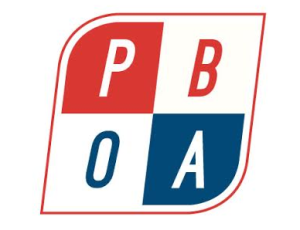We weren’t planning on making a public launch of the Pharma & Biopharma Outsourcing Association on September 17, but it’s funny how things work out!
I attended the FDA’s GDUFA Public Hearing on Policy Development in Hyattsville, MD that day with two members of our board of trustees, treasurer Tom Thorpe (Afton Scientific) and secretary Sam Ricchezza (WellSpring Pharma Services). The hearing was focused on a series of draft guidances for the Generic Drug User Fee Amendments of 2012 (GDUFA) that didn’t seem to pertain to Facility Fees, so I considered this mainly an observe-and-report event. I’d never been to one of these hearings, and I thought it would be a good opportunity to see how they worked, knowing that we’ll be up at the podium someday to speak to an FDA panel. Little did I know . . .
About these Facility Fees I mentioned: Under GDUFA’s first five-year term, 70% of the annual budget of $300 million (or so) comes from fees charged directly to manufacturing facilities; 14% of the total budget comes from API facilities, while the other 56% comes from Final Dosage Form (FDF) facilities for generic drugs, including primary packaging facilities.
Unlike the Prescription Drug Use Fee Act (PDUFA), on which GDUFA is modeled, Facility Fees are not charged to the license-holder — the company filing to sell the drug — but instead are levied directly on the manufacturing/packaging facility . Also, GDUFA has no provision for a small business exemption. Back when I was reporting on this for Contract Pharma magazine, I asked several parties involved in GDUFA negotiations why these two changes were made, but didn’t get a satisfactory answer.
The flat fee and lack of a small business exemption means that, for example, a small contract manufacturing organization (CMO) that has a single generic client at its facility pays the exact same fee as a mega-facility for a top generics company that might produce millions of doses of a generic each year. In 2015, the Facility Fee for each FDF site in the U.S. is $247,717, and $262,717 for each ex-U.S. FDF site involved in generics.
As it turned out, the second presenter of the morning session, Steven Pressman of PureTek, spoke exclusively about Facility Fees and how his company, a smaller generics firm, was penalized by having to pay the same fees as his multi-billion-dollar generics competitors. He discussed the necessity of a small business exemption to level the playing field, how it was unfair that no exception was made for small businesses, and how it would create barriers to entry and lead to fewer generics makers (and maybe shortages of critical generics). Here’s a PDF of his presentation.
After he finished, both of our trustees told me, “You have to go up and speak during the Open Comments at the end of the morning session.”
I knew they were right, so I signed up during the mid-morning break and began scribbling notes on the back of my agenda handout during the next few presentations. Sam pulled up some industry information on his iPad for me to include, while Tom encouraged me like a corner-man in a boxing match. I did a second round of notes on my ubiquitous graph-pad, and waited for my turn.
The Open Comments session went well, as far as I can tell. I introduced the PBOA and myself to the FDA panel and the audience, and explained our mission to help organize and represent the CMO/CDMO industry, and how it spun out of 14 years of covering the industry as the editor of Contract Pharma.
I thanked Mr. Patterson for his input on how Facility Fees affect a small generic company, then explained to the panel how CMOs are affected by them, using the example I mentioned above to show the inequity of a flat facility fee imposed on generics makers and CMOs alike. I noted that an unintended consequence of such fees can be that CMOs with few generics clients elect to exit the market completely. Since the products they would be leaving on the table would likely be specialty, short-run generics, there’s no guarantee that other CMOs would pick up the slack, and that could lead to serious shortages.
I told the board that one of our members lobbied his representative in Congress to help alleviate the burden of GDUFA on small CMOs. That led to H.R. 3631, the Small Manufacturer Protection Act of 2013, which would empower the FDA Commissioner to issue small business waivers under GDUFA when the Facility Fee “would present a significant barrier to market entry because of limited resources available to such person or other circumstances.” That Act, introduced by Reps. Robert Hurt (R-VA) and Phil Roe (D-TN), is currently in the Subcommittee on Health.
I also pointed out a way that the FDA’s Self-Identified Facilities list (XLS file) for generics facilities could be tweaked to differentiate between CMOs and generics firms, by using a check-box in which companies state Yes or No to “My company and its affiliates currently own ANDAs.” If Yes, then the facility is part of a generic maker; if no, then it’s a CMO. Perhaps in the next iteration of GDUFA, I noted, the Facility Fee structure could be altered to reflect the differences between those two classes of facilities. (I should note that the checkbox idea isn’t official PBOA policy; it occurred to me while I was writing up my notes a few minutes before speaking.)
I took pains to note that GDUFA reform is not the sole reason for being for the PBOA, since some of our members have generic products of their own, while other members have no exposure to GDUFA at all. In the process, I noted that we’re representing an industry with many niches and sub-groups, but that it’s a different business than pharma, than biopharma, than generics, and that the economics of it need to be better understood when crafting regulations that will affect it.
The panelists, who included Office of Generic Drugs (OGD) Acting Director Kathleen Uhl, M.D., ODG Regulatory Counsel Keith Flanagan, J.D., and OGD Senior Regulatory Counsel Martha Nguyen, J.D., were interested in the PBOA and in H.R. 3631. Dr. Uhl asked about the $20 million cutoff I cited for that Small Business Exemption; I got the information from one of my trustees and gave it to her after our segment was done. Mr. Flanagan congratulated us on the new association and welcomed us to “the GDUFA party.” I promised we’d be back for more hearings and meetings, and that we hoped to continue to conversation and form a bridge between FDA and the CMO/CDMO industry at large.
After the session was complete, a few non-member CMOs in attendance wanted to talk about the PBOA and how their companies can get involved. Tom, Sam and I talked with them about the six-month path from inception to FDA appearance, and we’re hoping to bring those companies on board in the weeks ahead.
As we were getting ready to leave the hearing and drive up to NJ for the PBOA board meeting, I was asked to do an interview for (I believe) VETV. I consented before thinking to ask what VETV is. As the camera began rolling, the interviewer explained that it’s a Vietnamese television station. I gave a brief introduction into the role of the PBOA and why were at the GDUFA hearing that morning.
The interviewer asked me if I felt the FDA is capable of inspecting overseas drug manufacturers. It wasn’t exactly what I was expecting to be asked, but I told her, “Under GDUFA’s Facility Fees, non-U.S. sites pay an additional $15,000 per site [both FDF and API sites], which I believe is intended to allow the agency to hire and train more inspectors for overseas facilities.”
She seemed satisfied with that answer, and Tom, Sam and I got in the car and drove up to New Brunswick for our second quarterly board meeting and the Contract Pharma annual Contracting & Outsourcing Conference & Exhibition. (More on that next time!)
And that was our FDA debut! A little serendipitous, but it was a fine experience, talking to experts in the OGD and getting feedback on the spot from our peers.
(A few days later, we were mentioned in the FDA News newsletter, and I’ve already fielded a few inquiries based on that. When the transcript of the GDUFA hearing is posted, I’ll post a link to it on this blog)
Interested in joining the PBOA? Learn more here!

